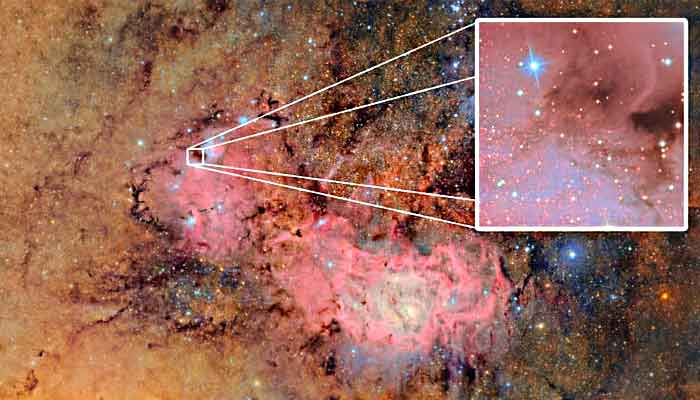The World Largest 3200MP Camera, set up at the Vera C. Rubin Observatory, has just shared its first stunning photos. Each image covers a sky area 45 times bigger than the full moon! Over the next ten years, this powerful camera will keep scanning the southern sky in super clear detail. Scientists hope it’ll help them discover new asteroids and unlock big space secrets like what dark energy really is.
First Space View from World Largest 3200MP Camera
The Vera C. Rubin Observatory just took a huge photo of the universe with its super powerful World Largest 3200MP Camera. It’s the start of a 10-year journey to scan the sky. This project might help us discover new things about space we never knew before..
The Vera C. Rubin Observatory in Chile has shared its first-ever pictures of space and they look truly amazing. These shots were taken with the LSST, World Largest 3200MP Camera ever built. Making this powerful camera wasn’t easy it took nearly 20 years and the efforts of hundreds of scientists from many countries, including some from CNRS. These space photos were shown to the public for the first time on June 23 at an event in Washington, D.C., held at the National Academy of Sciences.

Decade of Deep Sky Discoveries Begins
The Legacy Survey of Space and Time (LSST) camera is truly one of a kind. It’s as big as a small car and has a powerful 3,200-megapixel resolution. With help from the wide view of the telescope at the Vera C. Rubin Observatory in Chile, the World Largest 3200MP Camera can take one photo that shows an area 45 times larger than the full moon. The camera uses six color filters to take sharp, colorful pictures and can cover the whole southern sky in just three nights.
After arriving from the United States a year ago, it is now ready to share its first large space images. These will be shown to the world on June 23 during a press event at the National Academy of Sciences in Washington, D.C. This big moment comes after 25 years of research and hard work by scientists from many countries, including teams from CNRS. The World Largest 3200MP Camera is now fully active and ready for the universe.
This picture was made by joining 678 photos taken by the Vera C. Rubin Observatory in just over seven hours. When these pictures were combined, we could see things that are normally too faint like the gas and dust in the Trifid Nebula (at the top) and the Lagoon Nebula. These space clouds are very far from Earth, thousands of light-years away.These were captured thanks to the sharp view of the World Largest 3200MP Camera.
The first clear space images prove the telescope is ready for its mission. Over the next 10 years, it will take 1,000 detailed photos every three nights using six color filters to scan the southern sky.
These World Largest 3200MP Camera will help create a moving timeline of space, showing how the universe changes. Scientists will discover distant objects, track tiny changes like asteroids and comets, and learn more about dark matter, dark energy, and our solar system.
The CNRS has played a big role in this important space project, which is supported by the U.S. Department of Energy and the National Science Foundation. The powerful LSST camera was built at the SLAC Lab, and CNRS scientists helped design key parts of it. They worked on the camera’s main image section and created a smart robotic system to change its heavy color filters at night.
These filters help the World Largest 3200MP Camera study light from stars and galaxies so we can find out how far away they are. CNRS experts also helped build the computer system that will manage and study the millions of images taken showing more than 17 billion stars and 20 billion galaxies. The goal is to build the world’s biggest space photo collection.
The telescope will collect 20 terabytes of data every night. In France, 40% of this data will be stored and processed at the CNRS center in Lyon. Scientists around the world will get this data to make new space discoveries in the coming years.
Even though 25 space telescopes are working today, ground-based telescopes are still very important. They are bigger, more powerful, and can take clearer images. They also collect more data, since getting large amounts of data from space telescopes is not easy. Another benefit is that ground-based telescopes can be fixed or upgraded with better tools. The Vera C. Rubin Observatory, with its new advanced camera, is now one of about 50 systems helping us study the universe from both Earth and space.
For authentic news and the latest updates, stay connected with: DumdaarPoint.com

